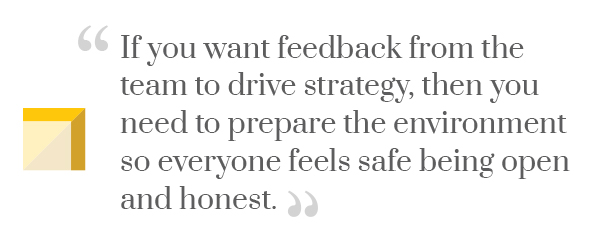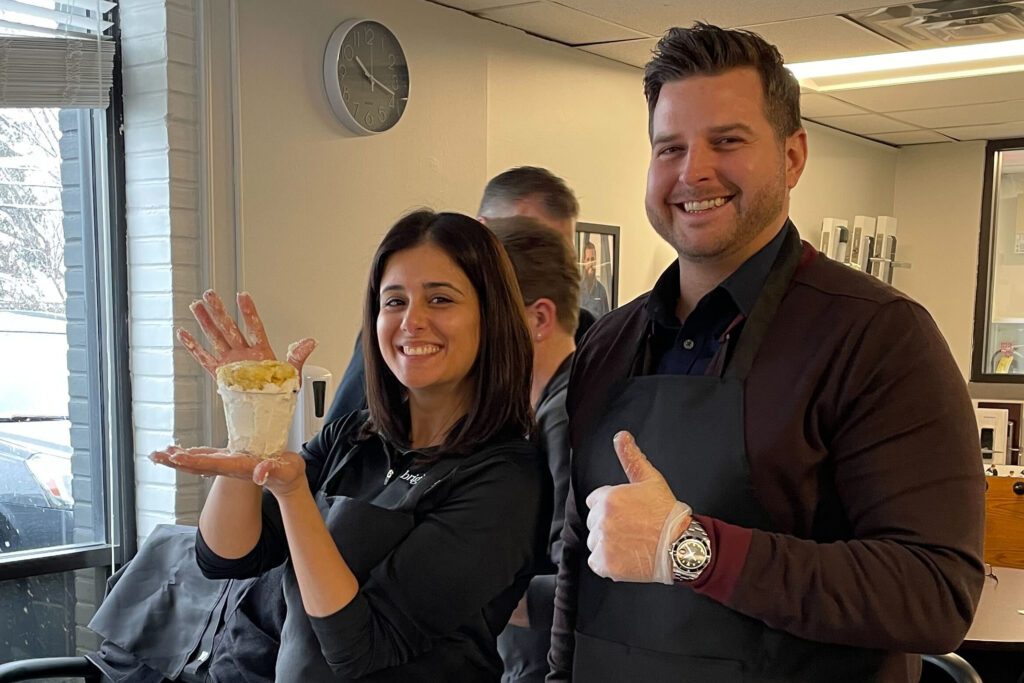Data from the Corporate Leadership Council suggests that employees who are engaged at work perform 20% better and are 87% less likely to leave their current company.
Despite early signs of power shifting back to employers, employees still are more likely to quit—or “quiet quit”—than pre-pandemic. Losing an employee is costly, as is replacing them.
The more engagement opportunities you offer your employees, the better:
- Making employee engagement a key part of your strategy
- Allowing employees’ insights to inform organizational strategy
- Giving people time and space to make good relationships
- Providing opportunities for employees to learn and grow
This is one of the core motivations behind Brightwing’s Annual Summit: a chance to engage, motivate, and inspire the team by involving all employees in goal setting for the new year.
With a workforce distributed across three cities—not to mention increased hybrid work since the pandemic—it’s rare and unheard of for our entire workforce to be in the same place at the same time.
That’s why for the second year in a row, Brightwing prioritized bringing everyone together for a retrospective on the year, planning for the future, and team- and culture-building exercises. Here are some of the key lessons we learned from this year’s Summit.
1. Involve all employees in company strategy
Generally, only 30% of employees feel like their opinion matters at work. If you want to buck this trend, you need to go above and beyond in the opposite direction.
One of the specific objectives of the Summit was to gather the whole team together in a conference-like setting. There were a number of reasons for this approach:
- We truly believe that every team member’s opinion matters, and want to hear from all perspectives
- Different people have different communication styles—a variety of activities is necessary to draw out quality feedback from everyone
- Our employees aren’t just cogs in a machine—we wanted to provide opportunities for fun and engagement, especially since they’ve never met some of these colleagues face-to-face
Organizations serious about employee engagement should take note: every person on your team has a valuable perspective.
This is especially true among recruiters, salespeople, and other frontline employees. They’re the ones who are out there talking to your customers. They have their “ear to the ground,” as it were.
If you don’t listen to your whole team, you’re going to miss signals—both internal and external—that something needs to change. This could put your business at risk.
2. Prepare the environment for open, honest communication
Let’s face it: most employees don’t feel comfortable speaking up at work. And believe it or not, that’s not a problem with the employee—but with leadership.
The reason people struggle to speak up is because they don’t have a sense of psychological safety.
That is, employees feel they can take risks, express concerns, ask questions, and admit mistakes—without fear of consequences or retribution.
So if you actually want employees to be open and honest in their feedback, you need to establish a psychologically safe environment:
- Encourage risk-taking and even failure
- Be upfront admitting your own mistakes
- Praise employees who ask questions or express concerns

If you want feedback from the team to drive strategy, then you need to prepare the environment so everyone feels safe being open and honest.
As you can imagine, this legwork can’t happen overnight. This requires months, even years, of trust-building with your team.
For Brightwing, this has been a core part of our culture for 50 years. And at the Summit, we saw the results of that work—our team felt free and safe to share their open, honest feedback.
During the company-wide roundtables, employees and management discussed some topics important to the organization:
- Celebrating small wins
- Overcoming hurdles and roadblocks to avoid burnout
- Leadership without a title
- Cross-company communication to improve how teams collaborate
Without a track record of encouraging honest communication, our team likely wouldn’t have had the psychological safety to engage in these conversations. However, we did, and our organization will be much better because of it.
3. Maximize feedback quality with group discussions
Every organization has their extroverts and introverts. Most of the time, getting the extroverts to talk isn’t a problem.
But the quieter, more introverted people on your team have valuable insights to share. Part of your employee engagement process should be finding ways to get them involved in the conversation.
During the Summit, we used a group, roundtable format to do just that. Over the course of the conversation, each person built on the ideas of the other, which created high quality feedback.
We found that 6-8 people per roundtable was the ideal size to have a good conversation. Large enough that people could bounce ideas off each other, but not so large that it jeopardized the team’s psychological safety.
4. Don’t just solicit employee feedback—act on it
A lot of companies claim they value employee feedback. But unless you actually act on it, it’s an empty promise.
During last year’s Summit, we gathered many ideas, suggestions, and general feedback. We surveyed the team post-Summit to get an understanding of how they prioritized solutions. And here was one issue that leapt to the forefront:
Going hybrid – working some days at home and some at the office each week – had helped Brightwingers see the special strengths of in-person work, and they wanted to double down on them. They spotted room for improvement and wanted the office to become a place they could collaborate more easily.
In response, over the first quarter last year, we renovated underused office spaces and turned them into meeting rooms. And we built a new kitchenette, fully stocked with snacks and drinks. Collaboration happens so much more easily when you’ve got the right space and a full stomach.
- Meeting with team members to identify ways to celebrate small wins
- Working to address failures in a positive, opportunity-focused light
- Creating cheat sheets to define industry-specific acronyms & holding onboarding trainings on “inside-baseball” terminology

Additionally, each department performed SWOT analysis with their team to identify the strengths, weaknesses, opportunities, and threats within each team. Leadership is already using this information to plan for the year ahead.
To be clear, not every piece of feedback requires action. Leaders need to be discerning in what they choose to apply.
But if you have your whole organization saying that XYZ change needs to happen, and you don’t act on it, you’re sending a clear message: you don’t actually care what they have to say. Good luck keeping them on board.
5. Don’t forget to have fun
Your employees aren’t just employees. They’re people. And unless you’re a workaholic, you don’t work all the time and always.
That’s why, for decades, Brightwing has prioritized a positive company culture where employees genuinely connect and enjoy spending time with each other. We’ve got some pretty cool people on our team, and it would be a shame if we missed that because of an all-work-no-play mindset.
During the Summit, we made sure to not just have serious conversations about the future of the company, but also have some fun.

So we decided to do a Nailed It! style cake-decorating contest. Different teams used icing, food coloring, and various cake toppings to create a design that was original, neat, and colorful. Then—and this was the best part—they had to “pitch” the cake to Brightwing’s CEO, Aaron Chernow and former president, George Opitz.

The theme was “dynamic duos.” And the winners of the competition did a stellar cake-depiction of Abbott & Costello’s “Who’s on First?” skit.
It was a total riot! Everyone had fun, and we all walked away with a better understanding of each other—not just as teammates, but as people.

Final thoughts on the Brightwing Annual Summit
If you want employees to feel bought into the organization, you have to involve them in decision-making.
This means asking for feedback, preparing an environment where they feel safe to be open and honest, and actually using that feedback to make strategic decisions.
Brightwing’s Annual Summit is proof that engaging employees and valuing their opinions is key to a solid culture and long-term retention. We hope the lessons we’ve learned along the way will be helpful to you.
P.S. If you want a sample of some of the fun that was had at Brightwing’s Summit, check out these videos:
Looking to hire? Looking for a job? Contact us today!

